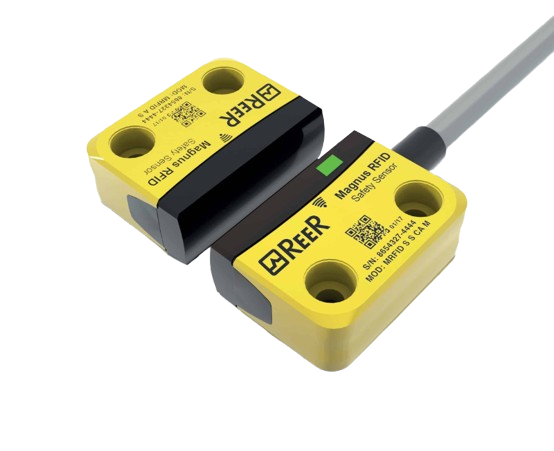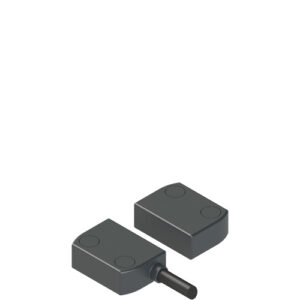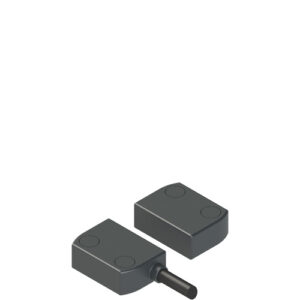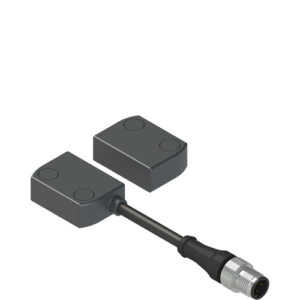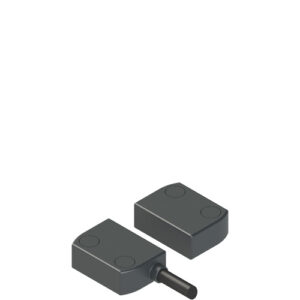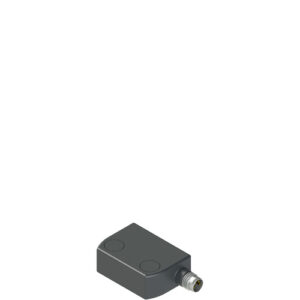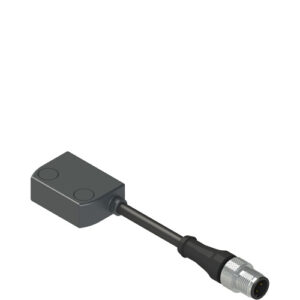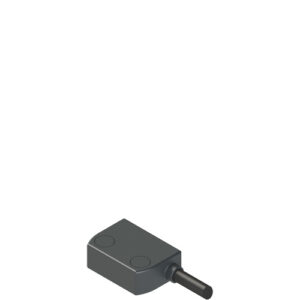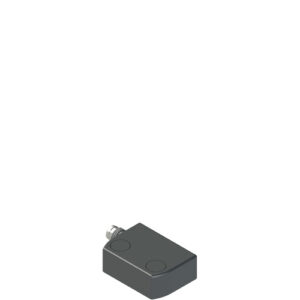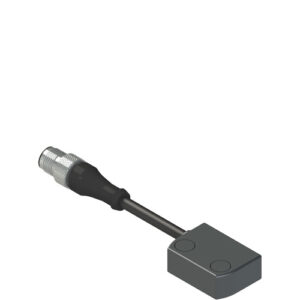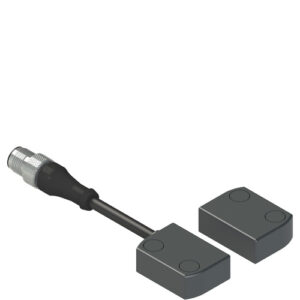Safety non-contact sensors are electronic devices used to monitor the position or state of machine components without physical contact. These sensors ensure that hazardous machinery…
Safety non-contact sensors are electronic devices used to monitor the position or state of machine components without physical contact. These sensors ensure that hazardous machinery remains shut down unless safe operating conditions are met. By using electromagnetic fields (RFID or magnetic), they offer tamper-resistant monitoring of doors, gates, and protective covers.
Advantages of Contactless Safety Technology
Unlike traditional contact switches, non-contact sensors are immune to mechanical wear, misalignment, and dirt ingress. Their sealed design allows for long-term reliability, reduced maintenance, and compatibility with harsh or hygiene-sensitive environments like food and beverage or pharmaceuticals.
Key Differences Between Contact and Non-Contact Sensors
Contact sensors require physical actuation, which can degrade over time due to friction and contamination. Non-contact sensors provide a longer lifespan, easier installation, and higher resistance to tampering. They are ideal for dynamic environments with frequent machine access.
Broader Integration with Safety & Automation Systems
In modern industrial environments, Safety Non-Contact Switches, whether RFID or Magnetic Coded, are only one part of an integrated safety architecture. These systems will work in tandem with various critical components such as safety PLCs, safety contactors or safety light curtains (including muting light curtains) to ensure real-time hazard detection and safe machine shutdown. Common peripheral safety devices like the emergency stop button, two hand station, and emergency stop rope pull are all effectively managed by the safety PLC’s logic structure.
Advanced installations frequently incorporate safety relays, mechanical interlock switches, and solenoid locking switches—each bringing additional protective functions to the machinery. To maintain continuous system health, engineers also deploy standstill monitors, speed monitors, soft starters, and reversing contactors within their automation frameworks. For measuring the product itself, solutions such as measurement light curtains can be integrated.
Beyond motion and logic safety, electrical condition monitoring is equally essential. Devices like insulation monitors, battery monitors, current monitors, voltage monitoring relays, phase sequence relays, undervoltage relays, and undercurrent monitoring relays are often integrated to detect anomalies in power flow or equipment performance, with this data displayable on HMI Touch Panels or similar systems. To support reliable operation, high-quality power relays and regulated power supplies are essential.
RFID Safety Sensors for Industrial Use
How RFID Safety Sensors Work
RFID safety sensors use radio-frequency identification technology to verify the presence of a coded actuator. When the actuator is within range and properly aligned, the sensor sends a signal to the safety system, enabling machine operation.
RFID Safety Switch Applications in Machinery and Doors
These sensors are common in industrial automation where access control and machine safety are critical. They are used on safety doors, hatches, and protective guards, ensuring only authorized components trigger a safe condition.
Benefits of RFID Safety Interlocks in Harsh Environments
RFID safety switches offer high resistance to vibration, temperature extremes, and contamination. Their unique coding also prevents manipulation, providing superior protection in demanding environments such as manufacturing, chemical processing, or outdoor machinery.
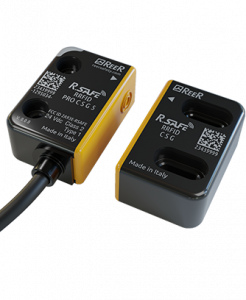
Magnetic Safety Switches and Interlocks
Understanding Magnetic Safety Switch Technology
Magnetic safety switches consist of a magnet and a reed switch. When properly aligned, the magnetic field closes the circuit, signaling a safe condition. Their simplicity and reliability make them popular in basic safety applications.
Magnetic Safety Sensors for Machine Guarding
Magnetic sensors are used to detect door or gate closures on machine guards, conveyors, and enclosures. They provide reliable feedback to safety relays or safety PLCs, ensuring machines cannot start unless all guards are securely closed.
Installation and Mounting Best Practices
For optimal performance, magnetic sensors must be installed with precise alignment and proper spacing. Secure mounting brackets and tamper-proof designs help maintain compliance with safety regulations.

Non-Contact Safety Switch Applications
Machine Safety Compliance and Contactless Interlocks
Non-contact sensors contribute to achieving performance levels up to PL e and SIL 3 when integrated into machine safety circuits. They support EN ISO 13849-1 and IEC 62061 compliance, helping businesses meet international safety standards.
Integration with Safety PLCs and Controllers
These sensors are compatible with safety relays, safety PLCs, and industrial controllers. Their outputs can be monitored directly by programmable safety systems, enabling dynamic and customizable machine protection strategies.
Use in Food Processing, Packaging, and Robotics
Industries that require frequent washdowns or handle delicate materials benefit significantly from non-contact solutions. Applications include robotic cells, automated packaging lines, and hygienic environments where durability and non-intrusive monitoring are essential.
Key Features to Consider When Choosing a Non-Contact Sensor
Switching Distance and Response Time
Critical performance parameters include sensing distance, which affects installation flexibility, and response time, which impacts system safety and speed. Choose models with adjustable or extended switching distances for complex setups.
Safety Ratings and Protection Categories (e.g., IP, SIL, PL)
Ensure the sensor meets necessary ratings like IP67 or IP69K for ingress protection. Verify certifications for SIL (Safety Integrity Level) and PL (Performance Level) to match your safety system requirements.
Connection Type, Output Configuration, and Power Supply
Look for sensors with M12 connectors, relay outputs, or PNP/NPN transistor outputs to match your existing control architecture. Consider power supply compatibility (typically 24VDC) to ensure seamless integration.
Featured Models and Trusted Brands
ReeR R-Safe RFID Series
ReeR’s R-Safe RFID series features uniquely coded actuators, dual-channel outputs, and robust housing for high-reliability applications. They are ideal for tamper-proof installations in harsh environments.
Pizzato SR AL and ST Series
The Pizzato SR AL41AM0.1 and similar models offer high-performance RFID and magnetic-based detection. These compact, versatile units support high IP ratings, coded actuation, and compatibility with modular safety systems.
Other Compatible Non-Contact Sensors in Our Range
Venus Automation also offers a broad range of non-contact sensors from top brands like Euchner and IDEM. Our curated selection covers everything from basic magnetic switches to advanced RFID-coded systems.
Compliance and Industry Standards
ISO 14119 and Functional Safety Requirements
Safety non-contact sensors must comply with ISO 14119 for interlocking devices, ensuring standardized functionality, reliability, and resistance to circumvention. Compliance supports machine safety certification and legal operation.
Ensuring CE and EN Compliance in Industrial Settings
All sensors provided by Venus Automation are CE marked and meet applicable EN standards. Documentation and declarations of conformity are available for download to support customer compliance efforts.
Frequently Asked Questions (FAQ)
When should I use non-contact over contact safety switches?
Use non-contact sensors when hygiene, frequent access, tamper resistance, or harsh conditions make traditional contact switches unreliable or costly to maintain.
Are RFID and magnetic safety switches interchangeable?
No. RFID switches provide coded, high-security functionality ideal for advanced systems, while magnetic switches suit basic guarding applications. The choice depends on your safety level, budget, and environment.
How do I troubleshoot a non-contact safety sensor?
First, verify proper alignment and wiring. Ensure the actuator is clean and within the specified sensing range. If issues persist, consult the datasheet or contact Venus Automation’s support team for diagnostics and replacements.
